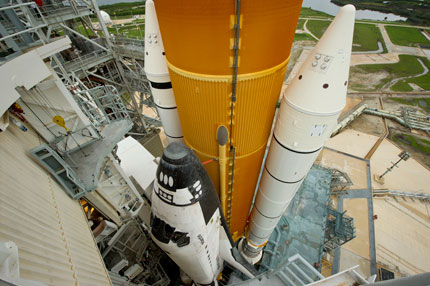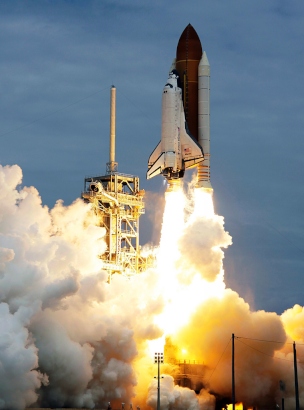
With a merging of technology and tears, the final chapter in the 30-year history of space shuttle flights has been written. For all who have worked to send these first-of-a-kind engineering marvels to space and return them to Earth, all who have flown aboard them, and all who have simply watched with awe and pride as they flew, space shuttle Atlantis' STS-135 mission was an emotional end of an era.
It was a hot July day on Florida's Space Coast as nearly a million spectators gathered along the beaches, rivers and causeways to watch history in the making. The weather forecast was a daunting 70 percent "no-go" to start the day, yet the countdown proceeded smoothly.

Just as expectations peaked and launch looked imminent, a last-minute glitch held the clock at T-31 seconds. The issue -- whether the gaseous oxygen vent arm had fully retracted -- was quickly resolved by the experienced team inside the Launch Control Center at NASA's Kennedy Space Center in Florida, and the clock began counting down the final seconds.

Down to the wire, with less than a minute left in the day's launch window, the three main engines roared to life and the twin solid rocket boosters thundered. Atlantis rose from the launch pad on a plume of fire and parted the high clouds on its way to the International Space Station and to its place in history. The 11:29 a.m. EDT liftoff on July 8, 2011, marked the last time a space shuttle would climb from Kennedy's seaside launch complex to soar toward the heavens.
My Video
Taken from the Kennedy Space Centre, Orlando. Launch begins at 0:12s into video.
Tags
PopularCulture,
Science,
SpaceExploration